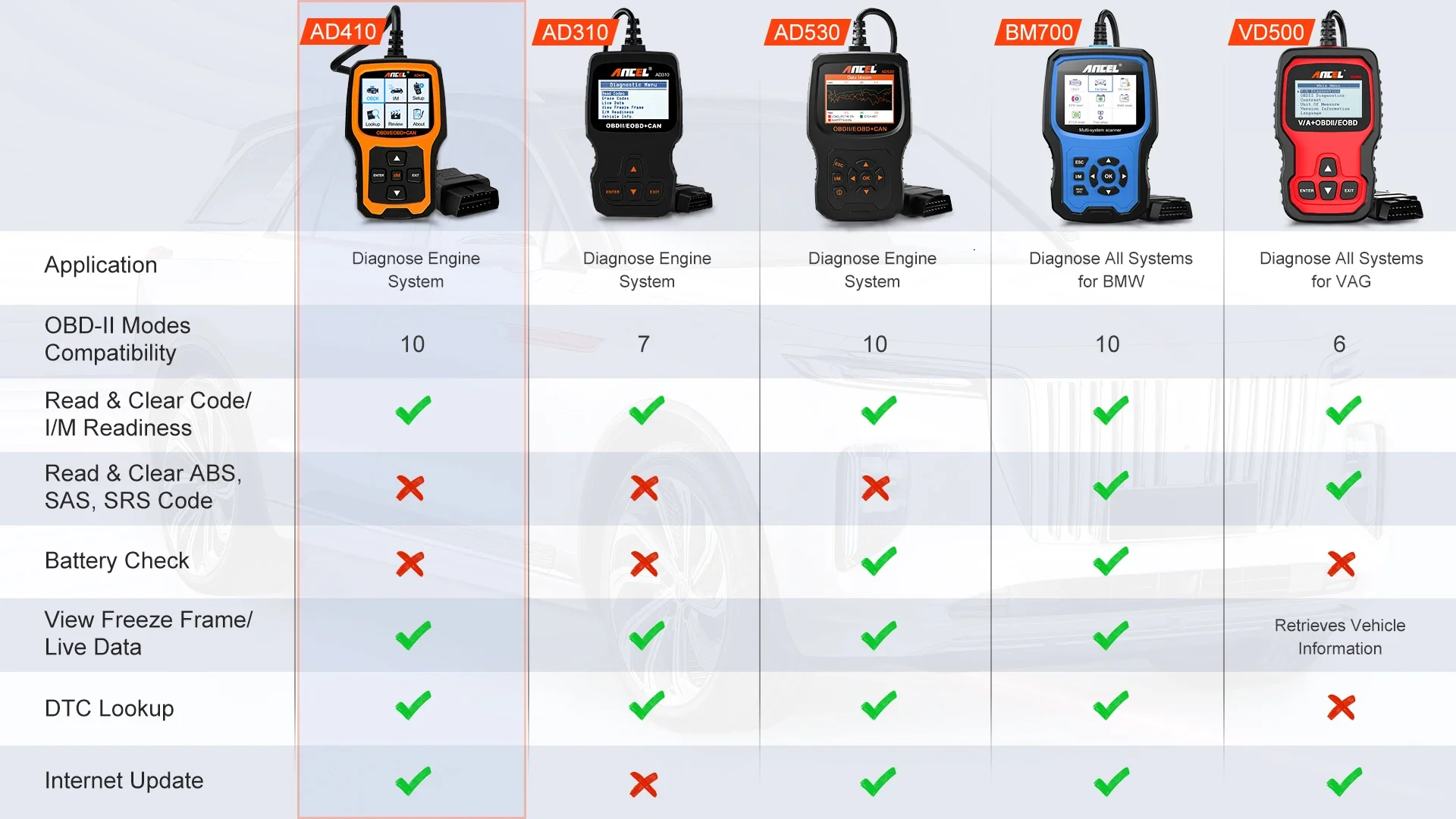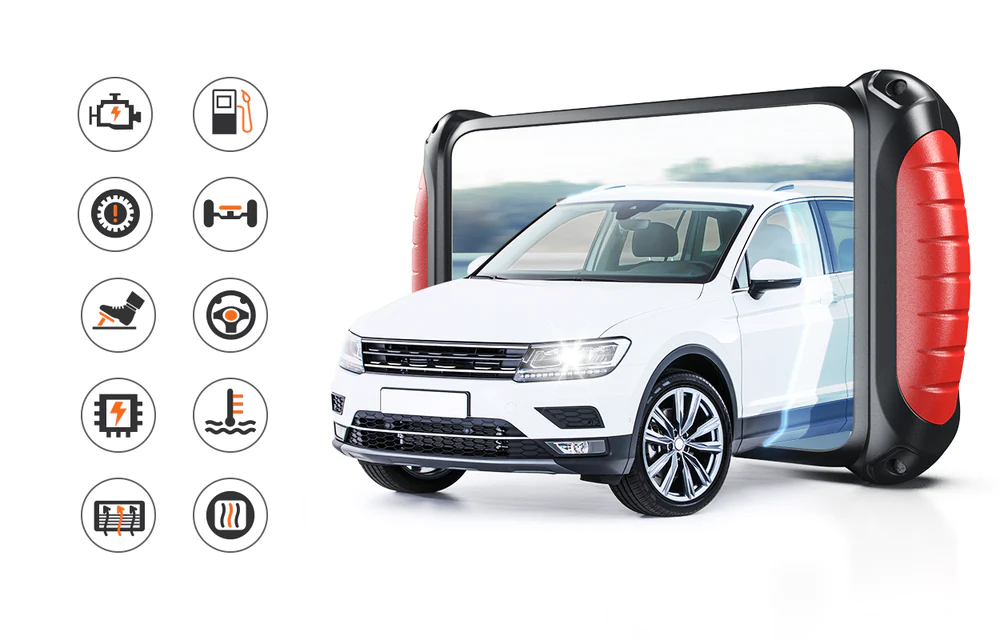Have you ever wondered what lies beneath the surface of your car's complex electronic systems? Modern vehicles are equipped with sophisticated computer systems that monitor and control various aspects of the vehicle's performance. These systems are often hidden from the average driver, but with the help of an Ancel OBD2 Scanner, you can gain access to valuable information and even perform some troubleshooting on your own. In this guide, we will delve into the world of automotive diagnostics and explore how you can use the Ancel Scanner to unlock your car's hidden secrets.

What is the Ancel Scanner?
Understanding the Basics
The Ancel Scanner is an advanced automotive diagnostic tool designed to communicate with your car's onboard computer. It is a handheld device that connects to your vehicle's OBD-II (On-Board Diagnostics) port. This port is typically located under the dashboard, and once connected, the scanner can retrieve valuable data from various electronic control modules within your car.
Why Use an Ancel Scanner?
The Ancel Scanner allows you to access real-time data, including trouble codes, sensor readings, and system statuses. With this information at your fingertips, you can identify potential issues before they escalate into costly problems. Additionally, the scanner provides insights into your car's performance, fuel efficiency, and overall health, empowering you to make informed decisions and optimize your driving experience.
Getting Started with the Ancel Scanner
Step 1: Locating the OBD-II Port
Before you can start using the Ancel Scanner, you need to find the OBD-II port in your vehicle. It is typically located beneath the steering wheel, but the exact position may vary depending on the car's make and model. Refer to your car's manual for specific guidance on locating the port.
Step 2: Connecting the Scanner
Once you've found the OBD-II port, simply plug the Ancel heavy duty truck scanner into it. The device will power on automatically and establish a connection with your car's computer. Make sure your vehicle's ignition is in the "on" position but not running.
Step 3: Navigating the Scanner Menu
After the Ancel Scanner establishes a connection, you'll be presented with a user-friendly menu on the display screen. Use the arrow keys to navigate through the options and select the desired functions.
Understanding Diagnostic Trouble Codes (DTCs)
What are DTCs?
Diagnostic Trouble Codes, or DTCs, are alphanumeric codes generated by your car's computer to indicate potential issues within various systems. Each code corresponds to a specific problem, sensor reading, or malfunction.
Interpreting DTCs
When you use the Ancel Scanner to retrieve DTCs from your car's computer, the scanner will display the codes along with their descriptions. These descriptions will give you a general idea of the problem at hand.
Common DTCs and Their Meanings
P0300 - Random/Multiple Cylinder Misfire Detected: This code indicates that the engine is misfiring in multiple cylinders, potentially causing rough idling and reduced performance.
C1201 - Engine Control System Malfunction: This code points to a problem in the engine control system, which could affect your car's overall performance.
U0121 - Lost Communication with Anti-lock Brake System (ABS) Control Module: This code suggests a communication problem between the ABS control module and other systems, compromising the anti-lock brake functionality.

Performing System Tests
Using Live Data
The Ancel motorcycle code reader allows you to access live data, which provides real-time readings from various sensors and control modules. Monitoring live data can help you identify irregularities and make data-driven decisions while diagnosing problems.
Running Component Tests
Some Ancel Scanners offer the option to run component tests. These tests activate specific vehicle components, such as the fuel pump or radiator fan, to check their functionality. By performing component tests, you can determine if a particular part is faulty and needs replacement.
FAQs
Can I use the Ancel Scanner on any car?
The Ancel Scanner is compatible with most OBD-II compliant vehicles manufactured after 1996.
Do I need any technical knowledge to use the scanner?
The Ancel Scanner is designed with user-friendliness in mind, and basic automotive knowledge should be sufficient to operate it effectively.
Will the scanner reset my car's check engine light?
Yes, the Ancel Scanner can clear diagnostic trouble codes, including the check engine light, once the underlying issues are resolved.
Can I update the scanner's software for future enhancements?
Many Ancel Scanners offer software updates that ensure compatibility with newer car models and provide additional features.
Is the Ancel Scanner a substitute for professional auto repair services?
While the scanner provides valuable insights, it is not a replacement for professional diagnosis and repair. Always consult a qualified mechanic for complex issues.
Conclusion
The Ancel bmw scan tool is a powerful tool that opens up a world of possibilities for car owners and enthusiasts. By using this user-friendly diagnostic device, you can delve into the hidden secrets of your vehicle's electronic systems, identify potential issues, and optimize performance. From interpreting diagnostic trouble codes to accessing live data and running component tests, the Ancel Scanner empowers you to take control of your car's well-being like never before.








